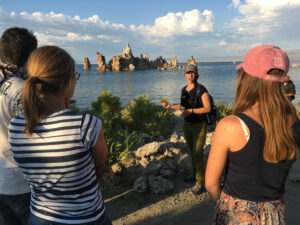
June 2014—Mono Lake level: 6380.4 feet above sea level
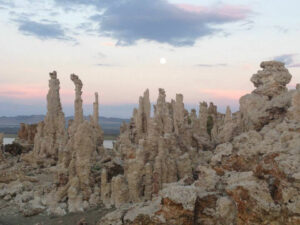
Just three years ago, during the middle of California’s historic drought, I visited Mono Lake for the first time. The large, salty lake in the middle of the high desert amazed me and I vividly remember admiring the incredible tufa towers for the first time one summer evening. That was before I worked for the Mono Lake Committee, before I understood the significance of Mono Lake’s level, and the last time I would see the lake with that much water until this month (August 2017).
July 2015—Mono Lake level: 6379.0 feet above sea level
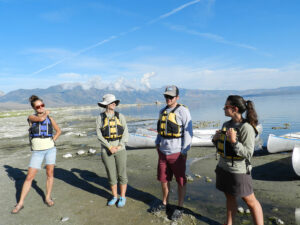
In 2015, I began working for the Committee as an intern and I saw the lake drop a foot and a half after the fourth-consecutive dry winter. Since the lake dropped below 6380 feet above sea level, diversions to Los Angeles were reduced by about 70% to allow more water to flow down the streams to Mono Lake. This year also marked my first time canoeing on Mono Lake, and just about every weekend I was on the water sharing the natural and political history of Mono Lake with curious visitors. One of the favorite tufa towers my fellow interns always liked to point out was “Andrew’s tufa”—a tufa that was just barely submerged under the murky water that I was always worried I would get my canoe stuck on while giving a tour.
June 2016—Mono Lake level: 6378.2 feet above sea level
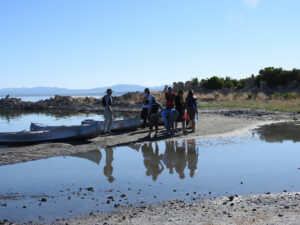
In 2016, after a disappointing El Niño winter, the lake dropped even further, to its lowest level in about 20 years. That summer I led the Mono Lake Committee canoe program, and because the lake had gotten so low, we had to find a new launch spot at Navy Beach. Longtime Canoe Tour Supervisor Gary Nelson sleuthed out a workable launch area, which we nicknamed “Gary’s Cove.” Tufa towers that hadn’t been seen on land were suddenly visible, and freshly-formed tufa glittered as the lake receded. We called this newly-formed tufa area—a favorite spot for sandpipers—the “sparkle tufa.”
August 2017—Mono Lake level: 6381.2 feet above sea level
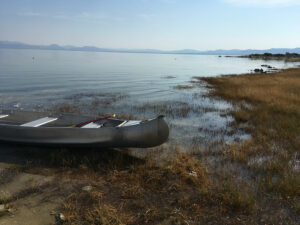
This year, after an unexpectedly wet winter with over 200% of average snowpack, we’ve seen an incredible lake rise of more than four feet and Mono Lake is now higher than I’ve ever seen it. Every time I visit the lake, I am astounded to see how much it has changed—the wide beach at South Tufa is shrinking dramatically, tufa formations that haven’t touched water in years are now submerged, and the once green, murky water is now clear. Andrew’s tufa, Gary’s Cove, and the sparkle tufa are all well underwater.
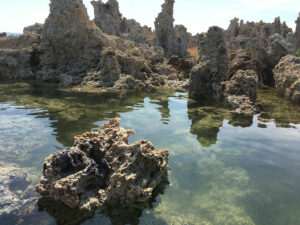
For me, one of the most inspiring things to know is that Mono Lake’s record rise this year is a direct result of the Committee’s actions to protect and restore Mono Lake. Because of the 1994 State Water Board decision, Los Angeles can only divert 4,500 acre-feet of water from Mono Basin streams this year—just 2% of this year’s total runoff. If you haven’t already, I hope you’ll come see this incredible year for yourself—come learn more on a free daily South Tufa tour at 10:00am, 1:00pm, or 6:00pm or sign up for a weekend canoe tour through Sunday, September 3.
